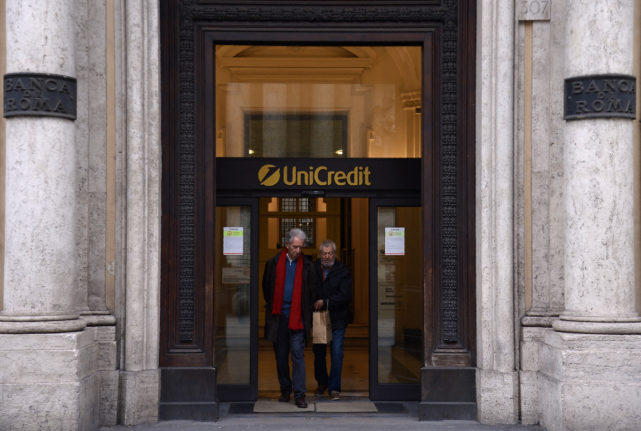Italian employees pay one of the highest rates of tax relative to income of all countries included in a new study by the OECD (Organisation for Economic Co-operation and Development), coming only behind Belgium, Germany, Austria and France.
The OECD report measured the ‘tax wedge’ or tax burden faced by both the employee and the employer in each country last year.
READ ALSO: How much does it cost to raise a child in Italy?
The figure includes income tax paid by workers, and social security contributions, which in Italy are paid by both the employee and employer.
According to the findings, Italy’s tax wedge is especially high for families with children, compared to a single worker with no dependents, ranking fourth-highest in this case among the 38 OECD member countries.
Only France, Finland and Turkey came higher.
In most of the countries studied, there are tax benefits for families with children. That’s because “most OECD countries provide benefits to families with children through cash transfers and preferential tax provisions,” reads the report.
READ ALSO:
- Who can claim Italy’s €200 cost of living bonus?
- The rules and deadlines for filing Italian taxes in 2022
But Italy recorded lower than average reductions, with a decrease of just 8.6 percentage points for family benefits – less than the OECD average of 10 percentage points.
That meant Italy ranked as having the fourth-highest tax wedge for an average married worker with two children, amounting to 37.9 percent in 2021, while the OECD average is 24.6 percent.
The Italian government has recently pledged to do more to help families with the cost of living, including by introducing the Single Universal Allowance (L’assegno unico e universale).
However, this payment replaces various so-called ‘baby bonuses’, meaning the government is scrapping lump sums of hundreds of euros previously paid to help new parents cover the cost of starting a family.
Looking solely at the net tax that a worker pays on income, the same category of employee paid an average tax rate of 18.3 percent in 2021, compared with the 13.1 percent OECD average.
In other words, the take-home pay of an average married worker with two children in Italy, after tax and family benefits, is 81.7 percent of their gross wage, compared to 86.9 percent for the OECD average.
The discouraging figures come after a recent report estimated the total cost of raising a child in Italy up to the age of 18 at €321,617.
For a single employed person with no children, Italy had the fifth-highest tax wedge, slipping slightly from fourth place in 2020.
The tax wedge came to 46.5 percent in 2021 for single workers, while the OECD average tax wedge was 34.6 percent.
READ ALSO: How much parental leave do you get in Italy?
The OECD also reports that, in Italy, contributions and income tax account for 84 percent of the tax wedge, compared to 77 percent on average.
Employment taxation has bounced back for most countries in 2021 following the Covid-19 pandemic, the findings showed.
“Increases to the tax wedge in 2021 have more than offset the sharp declines recorded in 2020 and have seen the tax wedge rebound to higher levels than in 2019, before the pandemic,” the report stated.
Taxation rates for Italian workers remain relatively high despite employment taxation reforms in 2021 that included cutting income tax for lower earners.




 Please whitelist us to continue reading.
Please whitelist us to continue reading.
Member comments